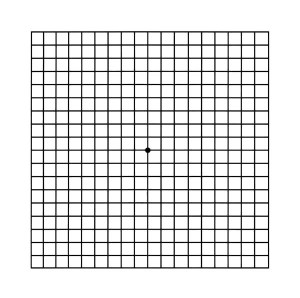The retina is a thin, transparent layer, less than a millimeter thick, which covers the eyeball from the inside. It is this tissue which gives us the ability to see, it may be compared to the film inside a camera. The retina allows us to perceive a picture and relay it to the brain.
Rarely, holes or tears may form in this layer and these are liable to lead to a condition called retinal detachment. It is important to note that the development of holes and tears in the retina is a relatively rare phenomenon, however when it does occur it may lead to significant damage to the retina and to the eye as a whole.
What essentially are these holes and tears?
They refer to microscopic tears of areas in which the retina is relatively thinner and weaker. These holes generally develop at the periphery of the retina because that is where the retina is often thinnest and hence weakest. There is a greater tendency for holes and tears to develop in myopic (short-sighted) eyes because such eye globes tend to be larger, with the retina ‘on stretch’ and hence thinner.
It is important to understand that there is treatment for holes and tears of the retina, treatment which welds the edges of the tear in a way that greatly minimizes the risk of later developing retinal detachment. This treatment does not close the hole nor does it seal the tear, but rather its purpose is to weld or “glue” the edges of the tear to the underlying layer, in order to prevent liquid from slowly ‘percolating’ through the hole or tear, which could cause retinal detachment. This treatment is performed using a laser in an office setting (no hospitalization required), but is effective only if retinal detachment has not yet occurred. Since it takes the laser treatment a week or two to produce an effect one has to hope that retinal detachment will not develop in the time period until the laser scars which protect the hole or tear from future detachment had formed.
How can one know if a hole or tear has developed in the retina?
It is not easy to diagnose these conditions but this is one of the things that ophthalmologists check and look for while they perform a routine retina examination. Additionally, there are certain phenomena that indicate that there might be a problem with the retina. These include seeing lights, lightning or flashes. The patient will describe these flashes as appearing within the eye, meaning that they appear even in the dark or with closed eyes, because the source of the light comes from within the eye. These flashes occur in one of the patient’s eyes, usually from a constant location (for example bottom right) and may be related to eye or head movements.
Additionally, if a lot of floaters suddenly show up in the visual field, especially if numerous and were not present in the past, it is advisable to go to an ophthalmologist who will perform a thorough retinal exam. If a curtain shows up in the visual field, such that one of the eyes perceives a portion of the visual field as missing or blurred, it is a sign warranting an urgent eye examination.
There are certain diseases of the retina which increase the likelihood of holes and tears developing. Myopia is one such condition, a previous retinal detachment of hole in the other eye is another risky situation, as are several other retina conditions that predispose to retinal holes and breaks. If your ophthalmologist believes you might be at risk, he/she may suggest periodic examinations to look for new holes or tears that might develop. And try to identify them and treat them prior to the development of a retinal detachment.

